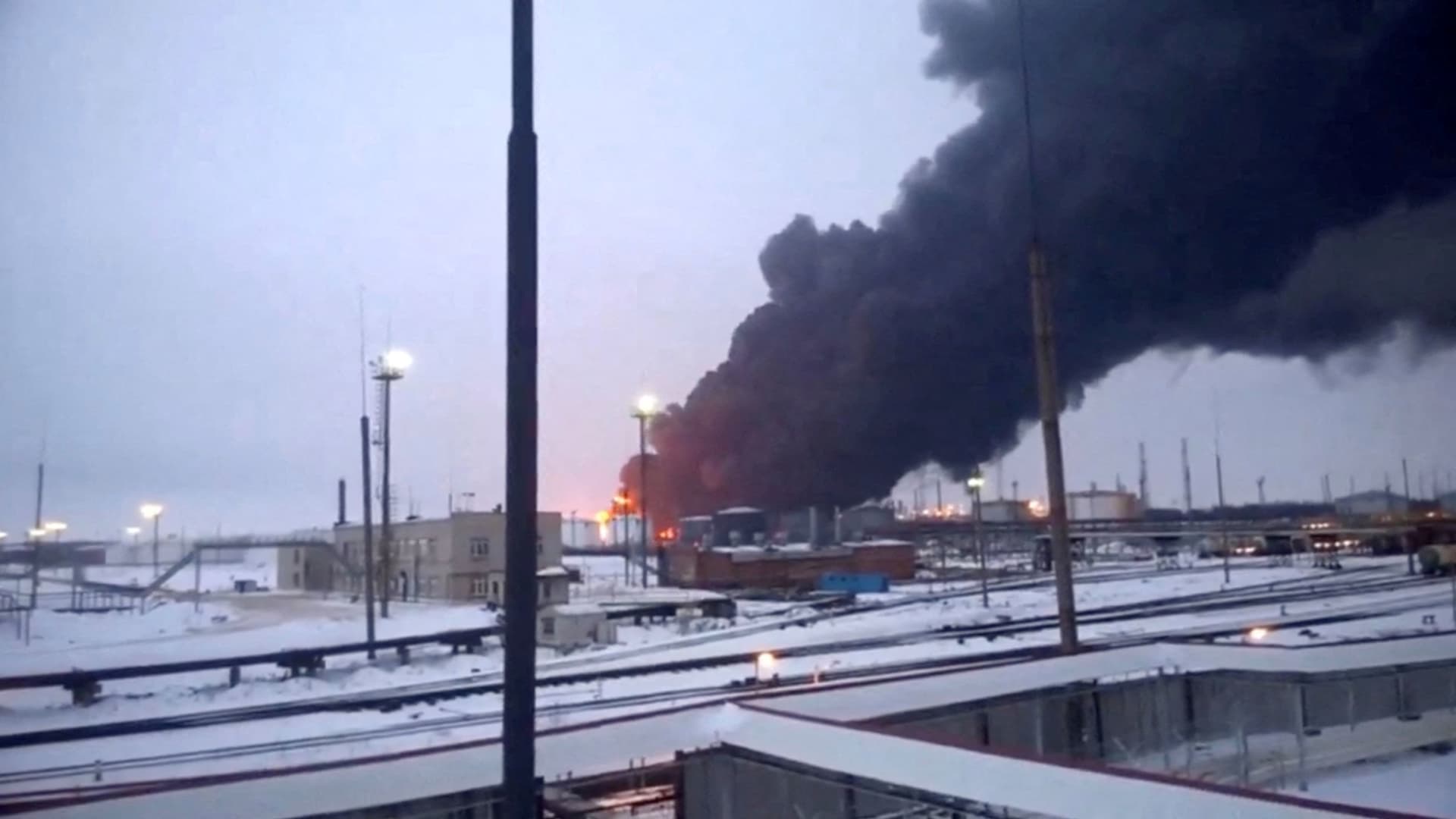Oil market watchers are torn between dramatically different forecasts for crude prices, even after OPEC’s upbeat forecast for crude demand in 2022.
OPEC’s outlook sees the world consuming 99.13 million barrels per day of crude in the first quarter of 2022, an increase of 1.1 million barrels per day from its last forecast a month ago, showing a more relaxed outlook on Covid-19 risks.
The omicron variant’s impact is projected to be “mild and short-lived,” OPEC’s latest monthly report said, adding that the world is better equipped to manage the pandemic.
While the 13 member group of oil-producing states has not let fears of the omicron variant change its projected timeline for a return to pre-pandemic oil demand, the market is still feeling the weight of bearish sentiment.
International travel restrictions have increased, and some state and local leaders have re-imposed things like mask-wearing and regular PCR test mandates. The U.K. raised its Covid alert level, while its Prime Minister Boris Johnson warned of a “tidal wave” of the more transmissible omicron cases, although data on the severity of the variant is still unclear.
International benchmark Brent crude is trading in the low $70 range, around $73.54 a barrel at 10:00 a.m. ET on Tuesday, down just over 1%, with West Texas Intermediate was trading at $70.53 a barrel at the same time, also down just over 1%.
“Very few trading days see the oil market so polarized as today,” Louise Dickson, senior oil markets analyst at Rystad Energy, wrote in a note Tuesday.
“While there is a clear bearish monster at the gates, the Omicron variant, bullish traders are placing bets that OPEC+ changes course and lowers crude output, which if realized will add to the support coming from Pfizer’s efficacy confidence in its antiviral pill against the pandemic’s latest strain.”
Should OPEC+ reverse course?
The decision of OPEC and its allies, in a larger group called OPEC+, is yet to be seen, as there is so far little indication of the group straying from its current plan of increasing crude production by 400,000 barrels per day in January of 2022. The group previously forecast a massive supply glut of 275 million barrels during the first quarter of next year, while stressing that it is prepared to reverse course if necessary on its plan to increase production.
While it might seem counterproductive, the strategy there, analysts said, could be to increase market share and hobble U.S. shale producers with lower oil prices, as well as disincentivize Washington from pushing as hard for a return to the Iran nuclear deal that would bring back more Iranian crude to the market.
United Arab Emirates Energy Minister Suhail al-Mazrouei described the oil market as being “in a good condition,” speaking to reporters in Dubai on Monday. “We have made our latest decision based on studying all the fundamentals of the market and we are confident that we are moving to a well-supplied market in the first quarter,” he said.
For prices to maintain high levels, Dickson said, OPEC+ would have to “avert its plan to increase output next month, by either keeping production stable or cutting.”
That course of action all depends on how OPEC+ reads the future demand picture. “There could be a good reason to reconsider its strategy,” Dickson wrote, “as up to nearly 3 million bpd could be cut from the expected global oil demand in the first quarter of 2021 if Omicron hits the world fully-blown and triggers lockdowns.”
While it’s gradually increasing production, OPEC+ is still far from its stated January goal of 400,000 barrels per day; its November production rose by 285,000 barrels per day, compared to a target of 400,000, according to its latest monthly oil report. Producer states Angola and Nigeria are still pumping below their output targets due to underinvestment, poor infrastructure and security problems.
But that’s still enough to bring Brent prices down significantly, says Edward Gardner, commodities economist at London-based Capital Economics.
“We think OPEC will continue to under-produce, but it should still account for a large share of the world’s oil production growth next year, which should drag Brent crude to about $60 per barrel by end-2022,” he said in a market note published Monday.




